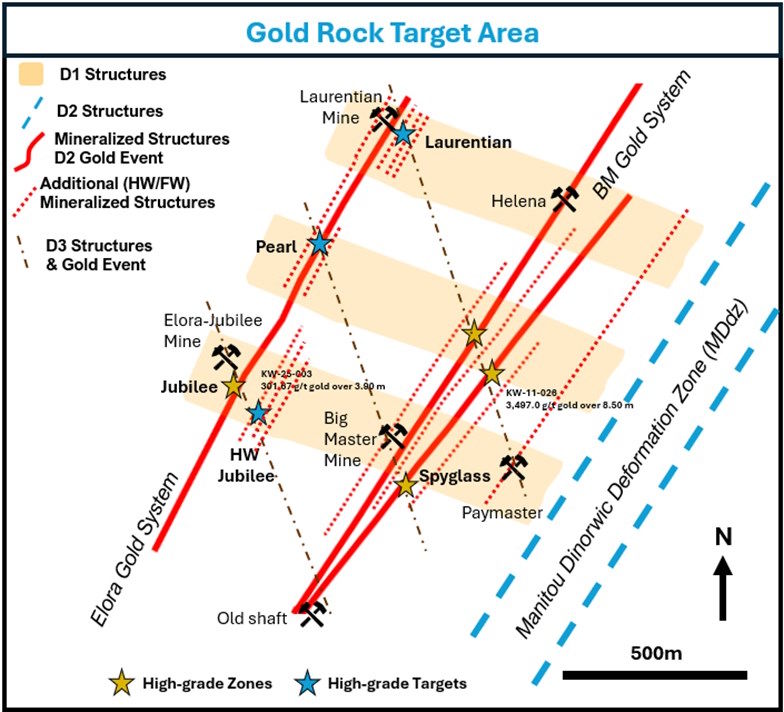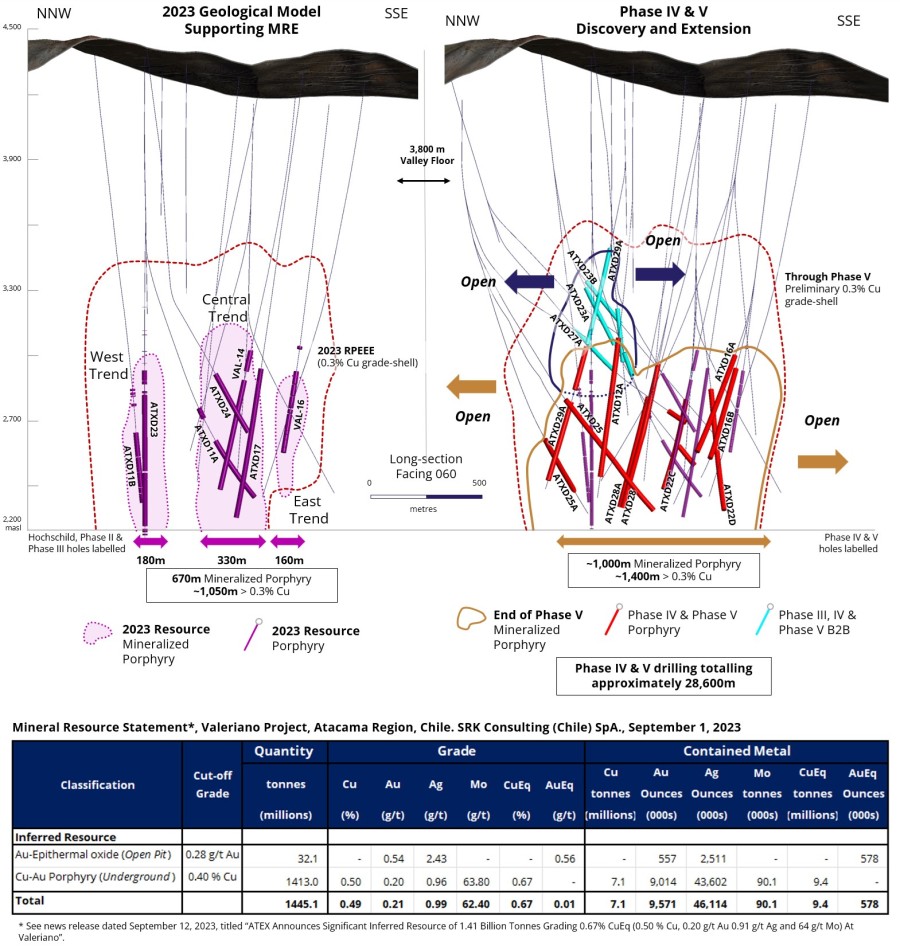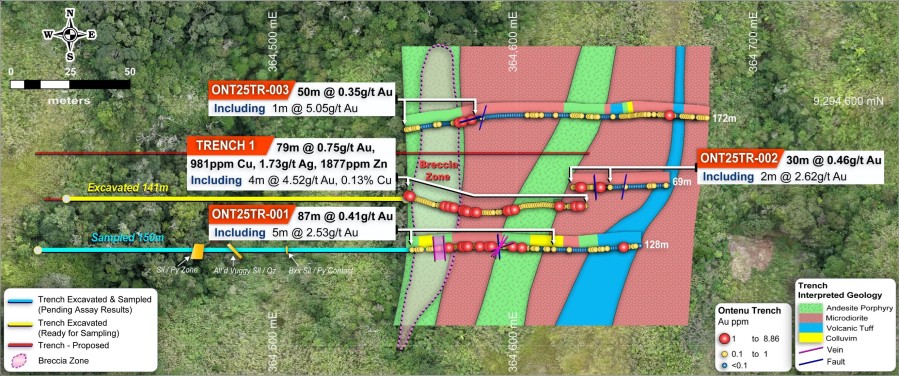VANCOUVER, BC / ACCESSWIRE / October 4, 2017 / CopperBank Resources Corp. ("CopperBank" or the "Company") (CNSX: CBK) (OTC PINK: CPPKF) (FRA: 9CP) is pleased to present the initial results of its summer diamond drilling program on its 100% controlled Pyramid copper deposit, located on the Alaskan Peninsula. The results returning from hole 17PY032 had 3 significant near-surface intervals totaling more than 290 metres at grades higher than 0.33% Copper, demonstrating Pyramid's potential for expansion.
The 2017 drilling program was designed to chase the extensions of the mineralization within the various zones composing the deposit, establish the connections between the three mineralized zones and to validate the existing block model established by the previous operators. Thirteen holes totalling 3628 metres of NQ size core were completed over eight weeks from July 29 to September 3. All the holes intersected hornfelsed siltstone and/or felsic to intermediate porphyritic intrusions with variable amounts of mineralization. The first two holes of the campaign, 17PY031 and 17PY032, reached the goal of verifying the mineralization extension. Significant mineralized intervals, calculated using a 0.2% Cu cut-off were established for 17PY032 with the best intercept of 201 metres 0.48 % Cu, 0.021 Mo and 0.1 g/t Au.
Drill Hole 17PY031
This hole located in the western extension of the North Zone established more precisely the disruption of the mineralization within the West zone. Several porphyry bodies traversed hornfelsed sediments but mineralization consisting of disseminated chalcocite is scarce. The best interval intercepted chalcocite disseminations associated with a weak potassic alteration overprint over 6 metres.
|
From m |
To m |
Width m |
Cu % |
Mo % |
Au g/t |
CuEq % |
|
24 |
30 |
6 |
0.235 |
0.054 |
0.043 |
0.390 |
Drill Hole 17PY032
Drill hole 17PY032 is located in the main zone, 125 metres West of drill hole 11PY014 and 85 metres East of drill hole 10PY002 with the aim to verify a westward extension of the deposit. Hole 11PY014 returned 100 m (from 48m) of 0.48% Cu, 0.1g/t Au and 0.033 % Mo, and hole 10PY002 returned 352m (from 4.57m) of 0.343 % Cu, 0.078 g/t Au and 0.008 % Mo. Numerous phases of feldspar porphyries composed the entire hole and present anomalous copper values over 0.1% Cu in 95% of the collected samples. No sediments were observed. Highest grade intervals are characterized by chalcocite, numerous A veins and by a strong clay alteration. Potassium enrichment of the mineralized areas is revealed by the ICP analyses associated with a calcium loss. The mineralization encountered in hole 17PY032 confirms the continuity of the mineralization between the two previous historical drill holes with similar copper grades and significant width. A detailed cross-section can be found on the company's website: www.copperbankcorp.com.
|
From m |
To m |
Width m |
Cu % |
Mo % |
Au g/t |
CuEq % |
|
11.00 |
51.00 |
40.00 |
0.333 |
0.010 |
0.07 |
0.406 |
|
67.00 |
118.26 |
51.26 |
0.340 |
0.021 |
0.10 |
0.460 |
|
132.00 |
333.00 |
201.00 |
0.480 |
0.021 |
0.10 |
0.597 |
|
including |
||||||
|
176.00 |
251.00 |
75.00 |
0.546 |
0.016 |
0.10 |
0.652 |
|
262.13 |
303.00 |
40.87 |
0.677 |
0.016 |
0.14 |
0.805 |
|
262.13 |
284.00 |
21.87 |
0.832 |
0.021 |
0.14 |
0.977 |
Note: The copper equivalent values (CuEq.) were calculated based on estimated prices of USD$2.75/lb of copper, USD$1200 /oz of gold and USD$7.25 /lb of molybdenum. No metallurgical tests were done. Metal recovery is unknown and was not taken into account. True width of intervals is yet to be defined.
Quality Control
All the core samples collected during the 2017 drilling program are pulverized at the ALS Fairbanks facilities then pulps are sent to ALS Minerals Laboratories in Reno, NV. All pulps are analyzed by a 4 acid multi-element analysis for 61 elements by ICP-AES method and assayed for Au by standard atomic absorption spectrometry (Au-AA23) following the fusion by fire-assay of a 30 gram sample. Samples returning copper values higher than 10000 ppm are re-analyzed by ICP-AES following a four-acid digestion and those exceeding 1 g/t gold by gravimetric finish (Au-GRA21). Standards, blanks, and duplicates were inserted every 20 samples consistent with industry best practices then revised by a qualified person using a Quality Assurance/Quality Control program before calculating the intervals.
About Pyramid
The Pyramid project is situated on private property with the subsurface controlled by The Aleut Corporation, an Alaska Native-owned corporation. Pyramid is a porphyry copper deposit containing a historical inferred mineral resource estimate of 122 million tonnes of 0.41% copper, 0.02% molybdenum, and 0.10 g/t gold (SRK, 2013) divided in three main recognized zones: Main, North, and West. The mineralization is related to a multi-phased calk-alkaline intrusion, intruding sediments of Tertiary Age. The porphyry system is of a minimal extent of 1,5 km2, displays a leached cap, phyllic, propyllitic, and potassic alteration analogous to the other copper deposits of the Circum Pacific Belt. The observed mineralization consists mainly in disseminations of chalcocite, chalcopyrite and local molybdenite and sulphide veinlets. Bornite, malachite and chrysocolla are also reported as accessory minerals.
This press release was prepared by Brigitte Dejou, P.Eng and a Qualified Person as defined by NI 43-101.





